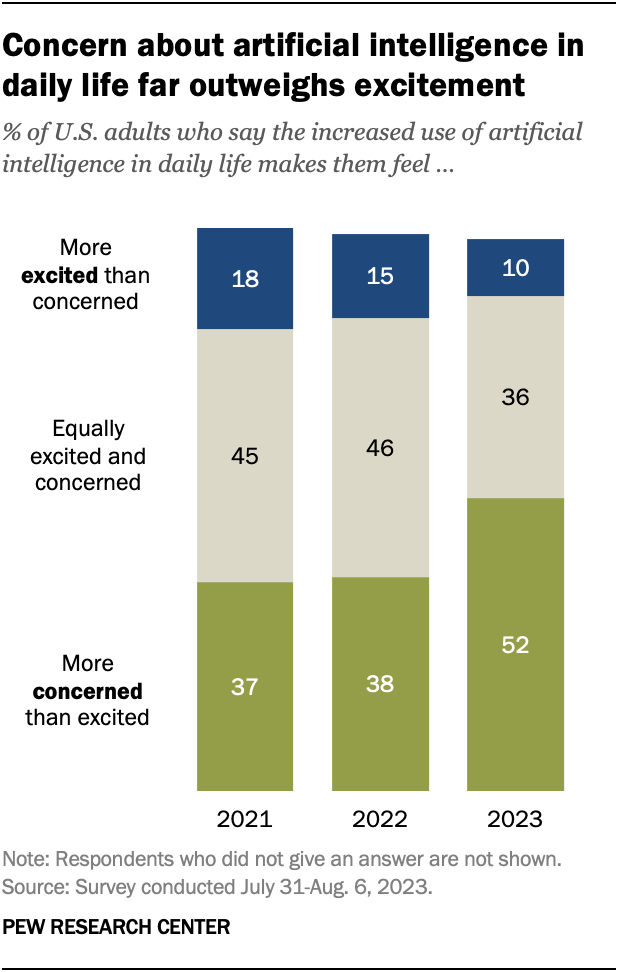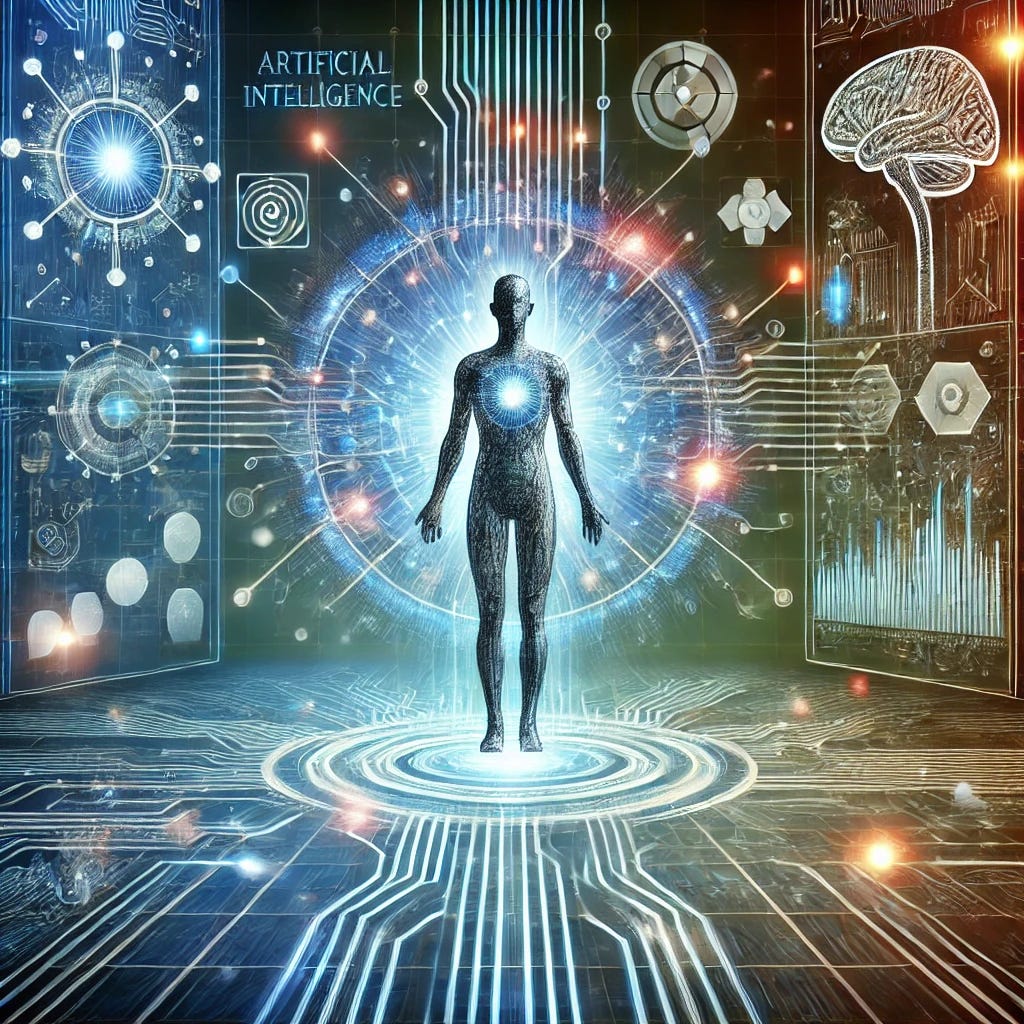Humans Need Connection Now More Than Ever
We need to rebuild the social links that make us human as AI threatens to further alienate us from each other.
In his play No Exit, Jean Paul Sartre’s Garcin famously declares “Hell is - other people!” As an introvert who can admittedly at times be prone to wanting to shut out the rest of the world simply to hear myself think, it’s a quote that always stuck with me. Of course, a single quote taken out of context doesn’t actually tell the whole story, and simply declaring the presence of others a hellscape misses the mark.
And it further strays from the target as we think about the innovations of the past couple of decades. These were initiatives meant to being us closer together - social media, the open office plan - but in reality pushed us further apart. Now we are facing a new obstacle in artificial intelligence - a potential existential threat to humanity - and our ability to connect as humans is going to become more important than it ever has been.
AI and the Human Element
Americans are growing more and more concerned about AI’s role in our daily lives. As the technology becomes more ubiquitous (at least in the headlines), instead of getting more comfortable with it we’re getting more uneasy.
The shrinking in the cohort of people more excited than concerned makes sense - as people begin to use it more they begin to realize its limitations. AI has incredible potential, but it will take time to match the hype.
We would expect them to enter into the middle ground of relatively equally excited as concerned. This is where the extremes reverting to the mean should occur - those way more concerned than excited become more familiar with the technology and realize the same limitations the cheerleaders saw and meet them in the middle.
But that’s not what we’re seeing here - the concern is far outweighing those on the fence. Instead of alleviating fears, time seems to only be increasing them.
The concerns are familiar - hacking of autonomous vehicles, its use in health care, cheating in academia - but one stands out as bigger than these admittedly key issues. The loss of a “human element” was cited in the research - we don’t want to be hired by AI in our job or treated by AI in our doctor’s office. We still need a human aspect to our interactions, even as we’ve moved away from them of late.
Fell Short of the Hype: Open Office Plans
Back in the 1950s, two German brothers ushered in the idea of office landscapes, or “Bürolandschaft.” The overarching theory was with everyone on the floor in an open space, there would be more collaboration and less stuffy management and the focus would be on the individual, not the hierarchy.

To make a long story a single paragraph, it was an overreaction in post-war Germany to the horrors of a strict hierarchical structure and has a utopian vibe of social-democratic egalitarianism. Herman Miller saw a way to capitalize on this and sold cubicles, only for the Bürolandschaft intelligentsia to re-emerge and drive open office plans in the US again - but this time with foosball tables!
It didn’t take long for Bürolandschaft to be exposed as ridiculously disruptive and lacking anything resembling increased collaboration. In fact, when it hit the American business world like a Mack truck in the 2000s, we all retreated to our computers and instant messaging instead of actually talking to each other. On average, face-to-face interactions between employees fell 70% for firms that instituted it.
The attempt (however well-intentioned) to drive human collaboration and connection fell short with the open office plan and it leaves us yearning for what was promised.
Surpassed the Hype: Social Media
When social media hit the scene, the idea behind it was connection. It was meant to shrink our worlds and keep us closer than ever. That letter that took four days to traverse the country now took seconds to show up in your AOL inbox. Once broadband become more widespread and Facebook hit the scene, you could instantly upload pictures that would have taken days to print out at the local photo shop and days (and extra postage) to send out.
But then the iPhone hit the scene, and social media wasn’t something you did on a desktop at the end of the day to keep up with friends. Social media became myriad things - from a time killer to a social competition to a potential living (but not really). Social media got a lot less social and a lot more isolating - just look at the isolation of the open office plan as we retreated to the tools of “social” media to communicate.
We’re not going to dive deep here, because it gets depressing, but between genocide, the covering up of war crimes, the enablement of all kinds of child abuse, revenge porn, and cyber bullying, we have come a very, very long way from the idyll of mere digital human connection.
Social media came with the promise to connect us instantly, and while it did it also enabled some of the worst of us to reach heights unimaginable without the megaphone the platforms provided. And it’s far too late to close Pandora’s box.
Humanity Needs Connected Humans
Which brings us to AI: the hype around it is massive. And leading thinkers in the space actually think that we’re not hyping it enough (and they’re right.)
But it comes at a time when we’re feeling less connected than ever. The loneliness epidemic that America currently faces is not just mentally taxing - it is accompanied by large increases in the risk of heart disease, stroke, and dementia.
We don’t need another dehumanizing force in our lives, but unfortunately the AI ocean liner is already at full steam and the best we can do is guide it because stopping it is out of the question.
Which is why we need to ensure we are layering in human aspects into AI. We need to learn from our past mistakes of attempts at connection - either where they fell short like open office plans or where they ran amok with social media. The potential for abuse with AI is very high and the kinds of protections we failed to put into place for social media need to be top of mind for artificial intelligence, but that’s table stakes.
Humans need to be - and remain - in control of the AI. This sounds obvious, but it needs to stay top of mind. We’re off to a rough start. No one can really explain how the neural networks in the large language models work - not even their creators. We’re getting there, but there’s a lot more work to be done.
We cannot control what we don’t understand, and right now we don’t understand the most widely used AI tools on the market. This is a warning sign we should heed, lest we find ourselves so far out over our skis we can’t recover in time.
And while the concerns about human connection exist, they exist in a bit of a state of denial. Because in that same Pew research cited earlier in this newsletter, 62% of respondents believed AI would have a major impact on workers generally, but when thinking if they would be one of those workers, only 28% thought so.
So how do we combat this? How do we make sure we don’t underestimate AI? Connection is key, as knowledge sharing and best practices (not to mention regulation) are going to be foundational to safe and responsible use of AI. The same societal ills driven by lack of connection - political disfunction, misinformation, economic inequality - will be wildly exacerbated by an AI without boundaries.
In the most recent post about AI, this newsletter urged readers to get to know AI - given that it’s created by humans and should be controlled by humans. We need to go a couple steps further - humans need to be at the center of AI. Without a steady hand on the tiller, it’s not entirely unreasonable to worry about AI’s existential threat to humanity.
LLMs like ChatGPT are just the beginning, and in the grand scheme of things they are simply predictors of the next best word (or tokens that make up the words.) When we get to artificial general intelligence it will be too late to make up the rules - we need to do that today when the stakes are lower. This can really only be done by connected humans working for a common cause. Try to be one of those humans.
Grab Bag Sections
WTF Heat Wave: It’s been so hot of late I don’t have the energy to complain about it - I’m too weak from doing days of yard work outdoors during the July 4th weekend. So thank climate change for not having to read my rant this week.
Album of the Week: We’re crossing the pond this week to dive into some British grime with one of the most famous London rappers at the moment. Stormzy’s debut album Gang Signs & Prayer is a thematic journey: through anger, through relationships, through God, and - at least this newsletter believes - a bit of satire.
The intro to the album is an excellent intro to Stormzy himself - high energy paired with a touch of anger, touching on many of the themes above. Given this newsletter’s affinity for deep tracks, “Cigarettes and Kush” might be the best cut on a very good album.
“Don’t Cry for Me” might seem to be getting ahead of oneself on a debut album, but it hits hard and you don’t find yourself questioning Stormzy’s ruminations about his legacy so early on in his life and career.
Finally, “Big For Your Boots” is either just a bit of a humorous track to garner mass appeal (which would explain why it was accompanied by a music video) or a moment of self awareness of grime tropes. The shots in the estate with chavs, the shot in the ends with the older Sikh gentlemen, the pub scene, and being at the chippy. If it’s not incredibly corny, it’s brilliant satire.
End the album on “Shut Up” - Stormzy’s park freestyle that was one of the tracks that got him noticed in the first place. Nothing against “Lay Me Bare,” but this song should have been the outro.
Quote of the Week: “The First Law: A robot may not injure a human being or, through inaction, allow a human being to come to harm. The Second Law: A robot must obey the orders given it by human beings except where such orders would conflict with the First Law. The Third Law: A robot must protect its own existence as long as such protection does not conflict with the First or Second Law.” - Isaac Asimov’s three laws of robotics
See you next week!










